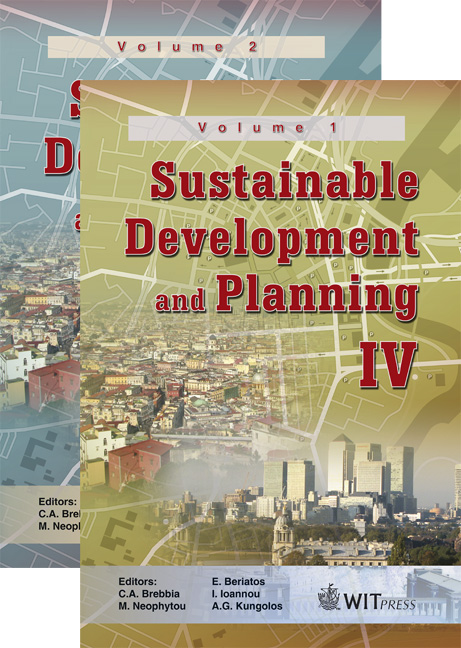Technology Solutions For Sustainable Urban Community Design In Subtropical Taiwan
Price
Free (open access)
Transaction
Volume
120
Pages
5
Page Range
217 - 221
Published
2009
Size
215 kb
Paper DOI
10.2495/SDP090211
Copyright
WIT Press
Author(s)
S. F. Lin & N. T. Chao
Abstract
Subtropical Taiwan has to import 99% of the required energy. With limited usable land and intensified urban development, the living quality is less than desirable due to air pollution, over heating, and lack of green outdoor spaces. Aiming at sustainable urban development, the Taiwan government recognizes that appropriate technologies have to be identified and developed to better cope with the challenges. It is found that the community is an appropriate context in which to explore sustainable development issues. The criteria to approach the issues are self-sufficiency, short-distance, and sharing to deal with energy/resources conservation, a healthy environment, and the aging population. For self-sufficiency, the core concept is to consume less commercial energy and recycle/reuse waste and water. For short distances, the main idea is to reduce the transportation frequency of people/goods and to promote zero-emission mobility. For sharing, the goal is to promote virtual and physical interpersonal interaction. Keywords: subtropical, sustainable, urban, community, technology, energy saving, renewable energy, waste, water, transportation. 1 Introduction Taiwan is situated in a subtropical region, whereby the climate is warm and humid. The annual average climatic data are: temperature 23oC, relative humidity 80%, rainfall 2,510 mm, solar irradiance 942–1,584 kWh/m2yr. Due to a shortage of indigenous energy, Taiwan has to import 99% of the required energy [1]. It is estimated that wind power may provide 3,000 MW and
Keywords
subtropical, sustainable, urban, community, technology, energy saving, renewable energy, waste, water, transportation.





